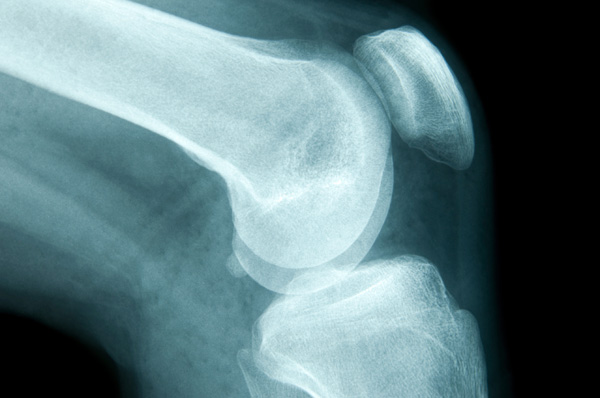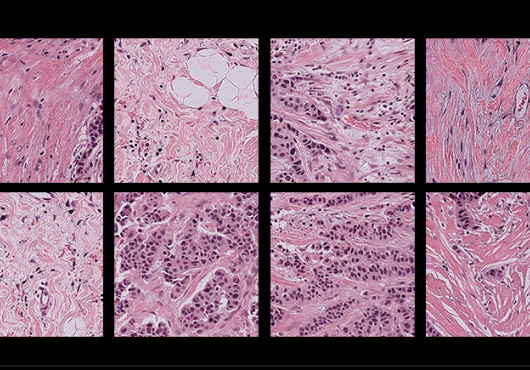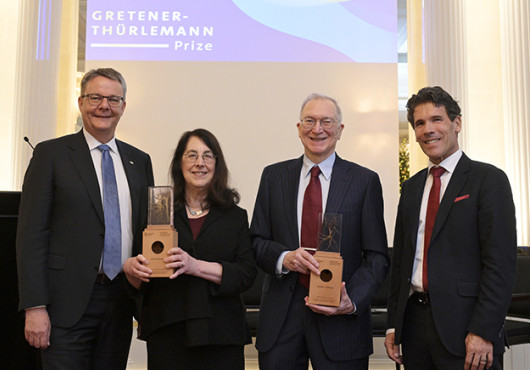
A molecular signaling pathway identified in mice by an international research team could be the basis of improved treatment for osteoporosis in people.
In a report published in Nature Communications, a team led by Harvard Medical School investigators at Massachusetts General Hospital describes how suppressing the activity of a specific enzyme not only increased bone formation in mice, but also reduced levels of the cells responsible for bone breakdown.
Get more HMS news here.
While one currently available treatment—injections of a fragment of parathyroid hormone—can stimulate bone formation, it also stimulates the resorption of bone.
“We wanted to understand how parathyroid hormone signaling affects gene expression within bone cells, particularly in osteocytes, which are buried deep within bone itself,” said lead author Marc Wein, HMS instructor in medicine at Mass General. “By identifying an essential step in that signaling cascade—turning off an enzyme called SIK2—our findings shed light on a new mechanism of parathyroid hormone signaling in bone and identify a potential new treatment for osteoporosis.”
Limits of current treatments
Most currently available osteoporosis drugs work by slowing down the destruction of bone, but their effectiveness is limited and long-term use can occasionally have side effects. The parathyroid hormone-based drug teriparatide increases bone density, but it also accelerates bone resorption. In addition, teriparatide must be administered by daily injection, discouraging many patients from using it to treat a symptom-free condition.
To better understand the mechanisms underlying the effects of parathyroid hormone on osteocytes, the research team focused on a gene called SOST, which inhibits bone formation and is suppressed by parathyroid hormone.
The team showed that parathyroid hormone suppresses SOST expression by means of transcription-regulating enzymes called HDACs, specifically HDAC4 and HDAC5. Previous research indicated that these enzymes were regulated by other enzymes called SIKs. In collaboration with SIK expert Olga Göransson of Lund University in Sweden, the researchers confirmed that parathyroid hormone signaling turns off the SIK2 enzyme.
A series of experiments used small-molecule SIK inhibitors created by study co-authors Nathanael Gray, the HMS Nancy Lurie Marks Professor of Biological Chemistry and Molecular Pharmacology in the Field of Medical Oncology at Dana-Farber Cancer Institute, and Ramnik Xavier, the HMS Kurt J. Isselbacher Professor of Medicine in the Field of Gastroenterology at Mass General. These inhibitors regulated the expression of SOST and other parathyroid hormone target genes such as RANKL, a molecule that stimulates bone resorption.
The research team then showed that a SIK2-specific inhibitor called YKL-05-093 mimicked the effects of parathyroid hormone on gene expression both in cells and in mice. Repeat dosing with YKL-05-093 had adverse effects on mice, so the researchers tested the closely related compound YKL-05-099, finding that daily doses safely stimulated bone formation in male mice.
Dual effect
The team was surprised to find that YKL-05-099 also reduced levels of osteoclasts—cells responsible for the breakdown of bone—demonstrating the desired dual effect of stimulating bone formation and suppressing bone resorption.
“We don’t completely understand why YKL-05-099 reduces osteoclasts, but we think the combination could be very useful therapeutically,” said Wein. “In addition to concentrating on understanding how this compound inhibits osteoclasts—which may lead us to develop even more specific SIK2 inhibitors—we also need to see if it increases bone mass in an animal model of postmenopausal osteoporosis, such as older female mice that have had their ovaries removed.”
Patent applications covering the therapeutic use of SIK inhibitors for osteoporosis have been filed by Mass General. Support for the study includes National Institutes of Health grants K08 AR067285, R03 AR059942, P01 DK011794 and P30 AR06626, and a grant from the Ellison Foundation.
Adapted from a Mass General news release.


